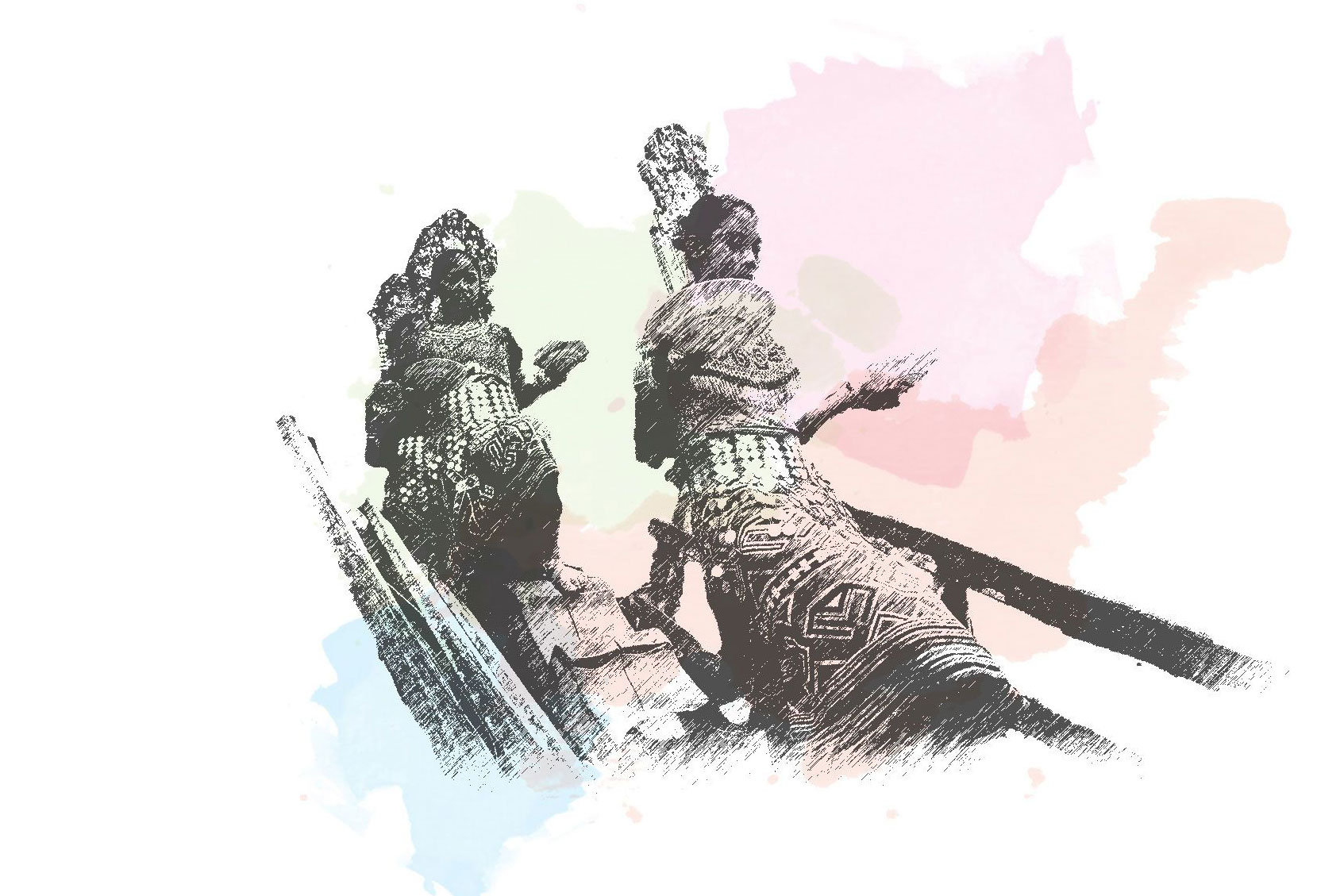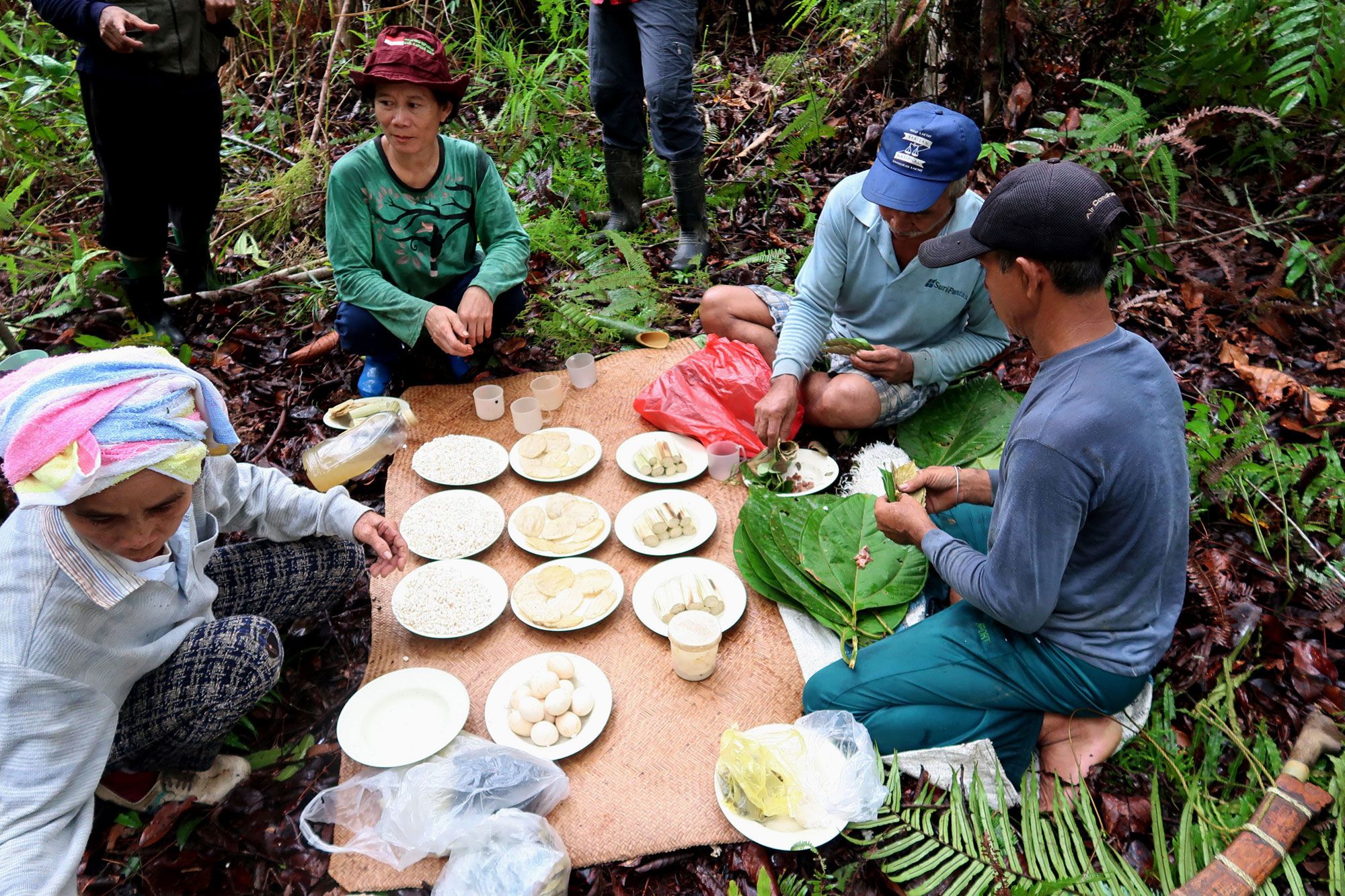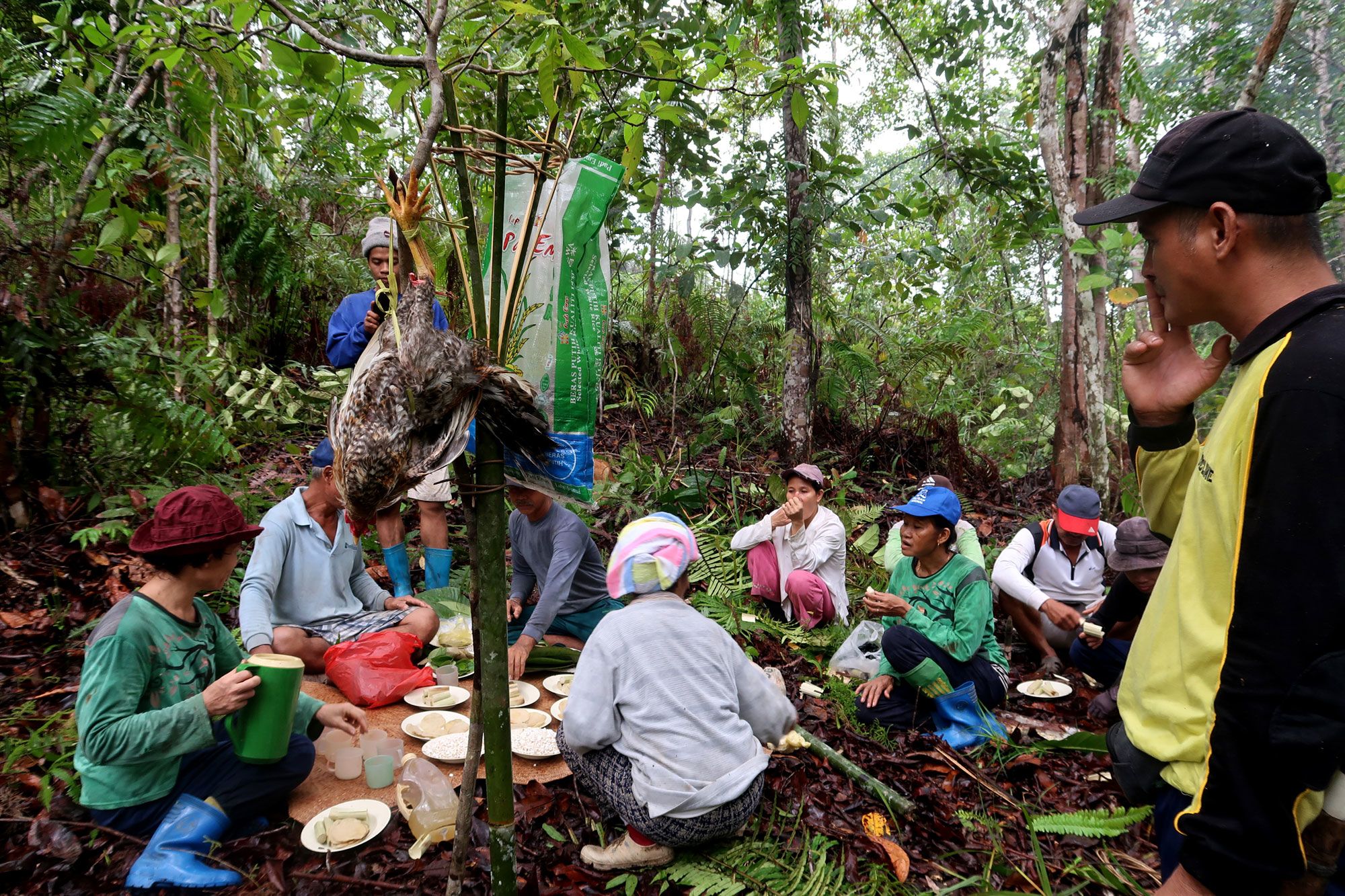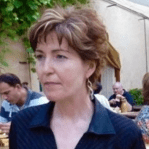We want you to share Forests News content, which is licensed under Creative Commons Attribution-NonCommercial-ShareAlike 4.0 International (CC BY-NC-SA 4.0). This means you are free to redistribute our material for non-commercial purposes. All we ask is that you give Forests News appropriate credit and link to the original Forests News content, indicate if changes were made, and distribute your contributions under the same Creative Commons license. You must notify Forests News if you repost, reprint or reuse our materials by contacting forestsnews@cifor-icraf.org.
Traditional practices and beliefs
Traditional and local beliefs, taboos, norms and knowledge play such a critical role in conserving local biodiversity and landscapes that researchers are now considering whether these might be applied more widely and in a variety of locations that are under threat.
Could informal “institutions” – including belief systems and practices – become more recognized as supports in preserving biodiversity and landscapes on a larger scale? If so, could these be applied in Indonesia’s biodiversity-rich but threatened Kapuas River watershed in West Kalimantan?
“ We have all learned the important part that maintaining social and natural capital, cultural traditions and diversity plays in landscape conservation”
Linda Yuliani, a scientist with the Center for International Forestry Research (CIFOR)
Her orang-utan population research showed how traditional and cultural practices, as well as nature-related social taboos, formed informal “institutions” that were important in protecting the endangered orang-utans and their habitat. That included taboos against disturbing burial grounds and sites of former community longhouses.
Habitat protection was critically important to protecting the species itself. More orang-utans were found to be living in areas with both good habitat condition and strong informal institutions. That fits with other findings showing positive correlations between traditional knowledge and biodiversity conservation.
“Now, we want to know if these conditions can also be effective when applying the landscape approach to restoration in the watersheds of Indonesia’s Kapuas Hulu region,” said Yuliani, who is implementing these lessons through the COLANDS project – Collaborating to Operationalize Landscape Approaches for Nature, Development and Sustainability.
The watershed of the Kapuas River – Indonesia’s longest river – is subject to an integrated management plan designed to protect the river’s essential hydrological functions while preserving forests in the watershed. However, the plan has not been effectively implemented on the ground, and lacks coordination across local communities, stakeholders and regional governments, according to participants of a workshop on watershed management in Pontianak in 2019.
The Kapuas landscape is not only valuable, but vulnerable. More than 50 percent of Kapuas Hulu district – the Kapuas headstream region –has been designated as conservation areas, due to the high value of its biodiversity, intact forest cover and the specific features of Danau Sentarum wetland, the biggest body of water in Kapuas Hulu district.
This wetland dries up during dry season and reverts to a deep lake during wet season.
As well, this wetland absorbs up to one-quarter of the peak flood waters from the Upper Kapuas River system during rainy seasons; and supplies up to 50 percent of water during dry seasons. It also produces vast amounts of freshwater fish that sustain local communities.

Threats come from the expansion of large-scale, private monoculture plantations that are converting large forests for their production, and attracting significant migration into the area, drawn by the prospects of employment.
However, jobs in the plantations hold little attraction for certain local and Indigenous people, who have seen the negative impacts from other villages of giving up their customary land for the plantations. These communities have strongly favored livelihoods in line with their culture, history, and land-use traditions.
They say they also feel a deep connection to the landscapes where they live and work, which emphasizes the importance of forest restoration and preservation. Forests are, for them, a vital source of wild food, clean water, medicinal plants, timber and fiber; and provide essential wildlife habitat as well as ensuring water supplies.
“The elders always remind us our territory is an inheritance, so we must keep it safe for our descendants,” one resident told researchers. “By being united and helping each other, we have good things (sources of income, land, natural resources) to pass on to them.”
Preserving forests is also essential to supporting efforts by villages such Keluin, Mensiau and Labian, working alongside NGO Riak Bumi, to increase income from non-timber forest products (NTFPs). That involves planting and protecting the tengkawang tree and its habitat running alongside rivers that feed into Danau Sentarum wetlands and the Kapuas. Not only is the tengkawang important economically, it also plays a major role in the culture of the Indigenous people of West Kalimantan.

Tengkawang (Shorea spp.) seed
The Dayak people, for example, have a long history with the tengkawang tree and understand its importance and functions, which include preventing erosion along the riverbanks. According to local residents, the tengkawang roots firmly bind the soil and tengkawangs on riverbanks are reportedly extra productive in fruit yields. The tree also produces tengkawang oil and is well known for its durable timber, used in home construction.


Meanwhile, the Iban and the Embaloh ethnic groups in the upper and middle reaches of the river obtain much of their livelihoods from farming, rubber production, fishing, and gathering non-timber forest products, including honey. The Malay live in the downstream part of the river and generally become fishers, as well as earning income from rubber gardening and forest honey.
Each ethnic group has its own traditional systems and land-use classifications used to manage their resources and landscape. The Iban people, for example, call their landscape menua, which generally includes several land-use categories: sacred sites (for example, ancestor graves, former longhouse sites, community-protected forests); communal property (such as communal forests for NTFP gathering and hunting, communal lakes for fishing); and household agricultural areas that include swidden cultivation fields and mixed gardens.
Customary rules are used to manage the menua, and traditional rites are conducted before each activity (for example, before planting, before harvesting and after harvesting) to avoid bad luck and to seek blessings from the ancestors.
The people of Labian village recently conducted a muja menua rite (praising the God, the earth, and ancestors) before replanting riverbanks with tengkawang seedlings. This replanting, proposed by villagers during a Labian community meeting facilitated by the Riak Bumi NGO, helps to reduce risk of erosion. At the same time, it ensures the growth of an important tree that creates alternative sources of income for the community from tengkawang oil. The ritual thus preserves culturally important tree species and practices.


Indigenous people have been practicing landscape governance using their traditional knowledge and customary rules for generations.
As knowledge was generated and adapted over time to secure livelihoods, many systems became naturally aligned with the principles of sustainable landscape management and conservation developed by modern science. Indigenous people also have traditional conflict management approaches where customary leaders play the key roles in developing resolution mechanisms.
These traditional systems have been self-enforced, and Indigenous people in these landscapes are more likely to obey customary rules than formal regulations. As a result, these systems are important assets for the operationalization of landscape approaches.

COLANDS is part of the International Climate Initiative (IKI) and is funded by the German Federal Ministry for the Environment, Nature Conservation and Nuclear Safety (BMU).
This research forms part of the CGIAR Research Program on Forests, Trees and Agroforestry, which is supported by CGIAR Fund Donors.
Copyright policy: We want you to share Forests News content, which is licensed under Creative Commons Attribution-NonCommercial-ShareAlike 4.0 International (CC BY-NC-SA 4.0). This means you are free to redistribute our material for non-commercial purposes. All we ask is that you give Forests News appropriate credit and link to the original Forests News content, indicate if changes were made, and distribute your contributions under the same Creative Commons license. You must notify Forests News if you repost, reprint or reuse our materials by contacting forestsnews@cgiar.org.
We want you to share Forests News content, which is licensed under Creative Commons Attribution-NonCommercial-ShareAlike 4.0 International (CC BY-NC-SA 4.0). This means you are free to redistribute our material for non-commercial purposes. All we ask is that you give Forests News appropriate credit and link to the original Forests News content, indicate if changes were made, and distribute your contributions under the same Creative Commons license. You must notify Forests News if you repost, reprint or reuse our materials by contacting forestsnews@cifor-icraf.org.



